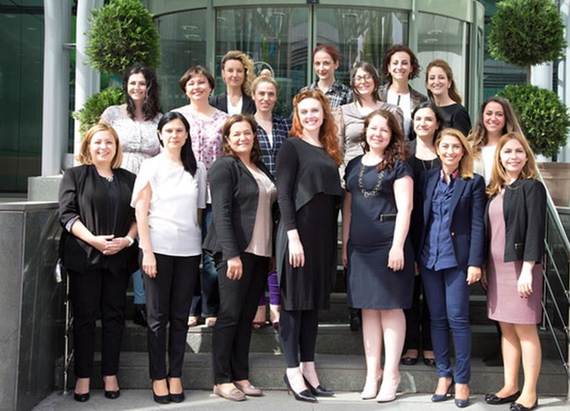While meeting with our Bayer team in Turkey last week, I was once again impressed by the outstanding men and women in our organization. And I was particularly struck by the number of women leaders, including the head of legal, IT, consumer care, communications, and more.
I wanted to learn a little more about what this team is doing right to have such a great balance in their leadership. Here's my take-aways.
-Reverse the "mobility" criteria: In many large companies, the first question when considering a talent for promotion is asking if they are mobile and can move to another country. One colleague suggested a solution from her previous company. Rather than asking the more senior leaders with families to move, bring the younger, developing talents that are "mobile" to the leaders. This provides international experience to the developing talents, and enables the organization to benefit from further utilization of seasoned and proven leaders.
- Put "Global" roles in the countries: Often organizations have a rather predictable development path, moving employees from countries to regional roles, then eventually to global roles at the organization headquarters. One of our leaders in Turkey shared an experience where the global organization took an innovative approach to talent development, enabling her to take a global role while remaining based in the country organization. This is a win-win, keeping talent close to the market and bringing meaningful experience to the global organization.
- Share experiences of women in leadership: This one is so easy that often people forget its importance. When women do succeed in leadership, it is important for them to share their experiences. For example, if relocating to a new country for a senior role, how did they handle the childcare or support for their partner? It's a simple step, but sharing ones own experience empowers others to follow in their steps.
- More Short-Term Assignments: Of the women leaders I spoke with in Turkey, more than half had recently done a "short-term assignment." Generally in an organization, these are 3-6 month placements in another team, or another country, to provide exposure, experience, and development opportunities. My colleagues unanimously recommended short-term assignments as a great way to advance women in leadership roles.
- Clear guidance to HR for talent pools: Another meaningful guidance is for hiring managers to give clear direction to HR and recruiters that they want the candidate pool to be gender balanced. We've all seen the recent studies about the importance of having more women in the candidate pools to increase the odds of a successful candidate. It just works. The example shared with me was that one senior leader gave the guidance that for a specific hiring process, she wanted a gender balanced candidate pool. As a result, more than half of the 20 people hired were women!
- Talent Swapping: This is a great suggestion for keeping teams vibrant and customer-focused - swap talent in countries and global organizations. If you have a woman leader to develop in a country, have her change places with another leader for a few months. Let people walk in each other's shoes and experience another side of the business.
- Opportunities: Lastly, when I asked why these women chose to develop and grow their careers at Bayer, one answer kept coming up - Opportunity! They saw that in this organization, there was actually opportunity for growth, for development, for new roles, for challenges and this motivated them to stay inside the organization.
Of course, every organization is different, but these are some excellent suggestions that we have seen work in practice.
Not only is Turkey the bridge between Europe and Asia, it is proving itself to be a bridge between the traditional and modern ways of working in a digital world. And we can learn a lot from their example!

